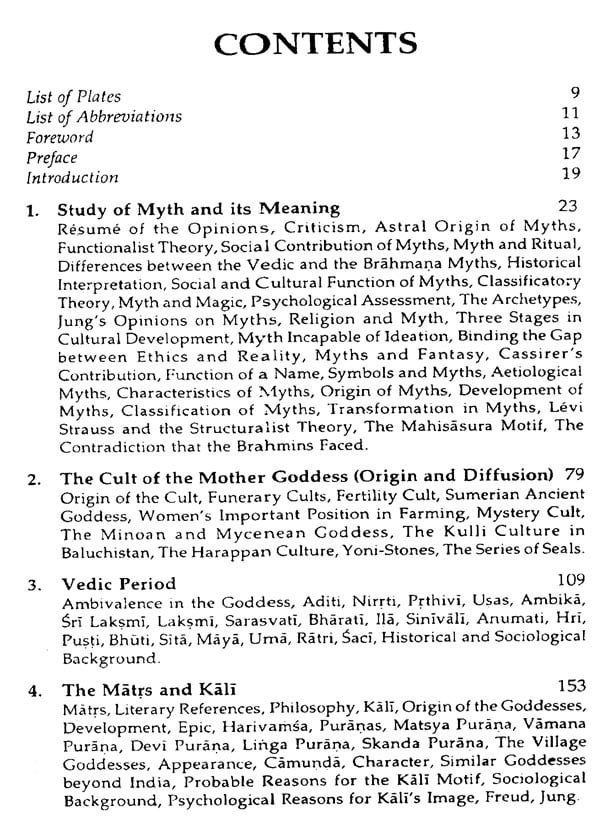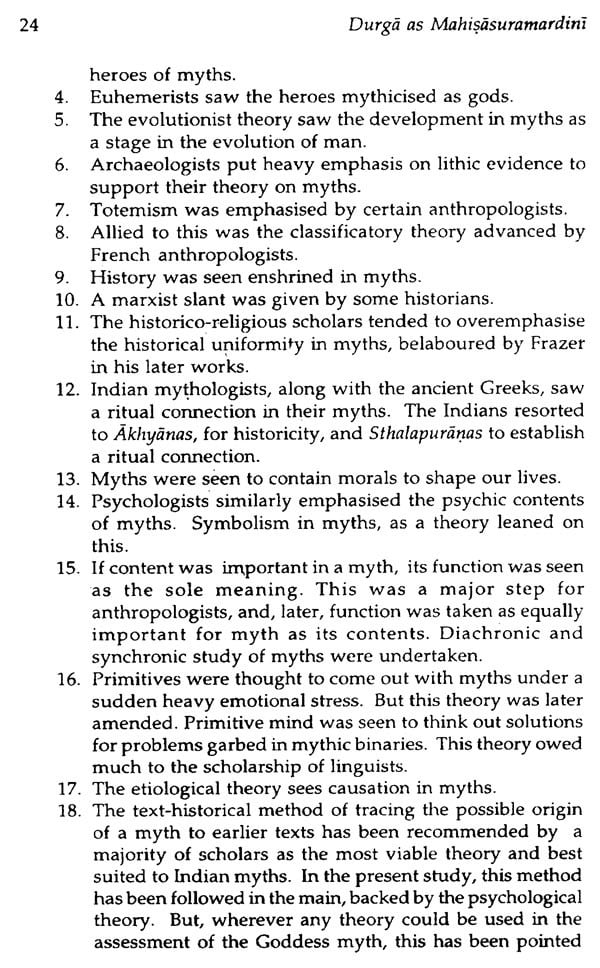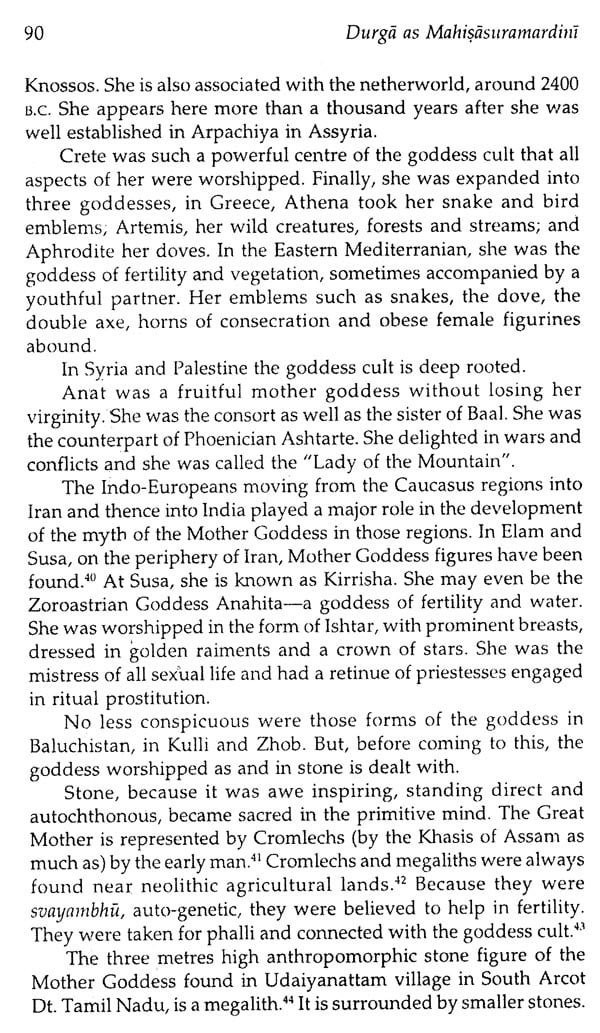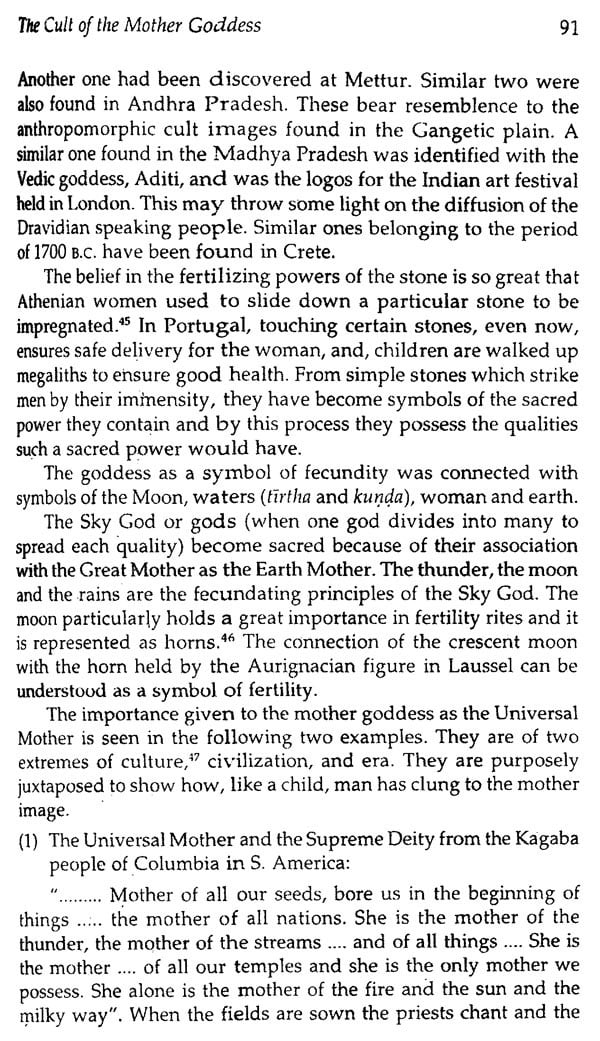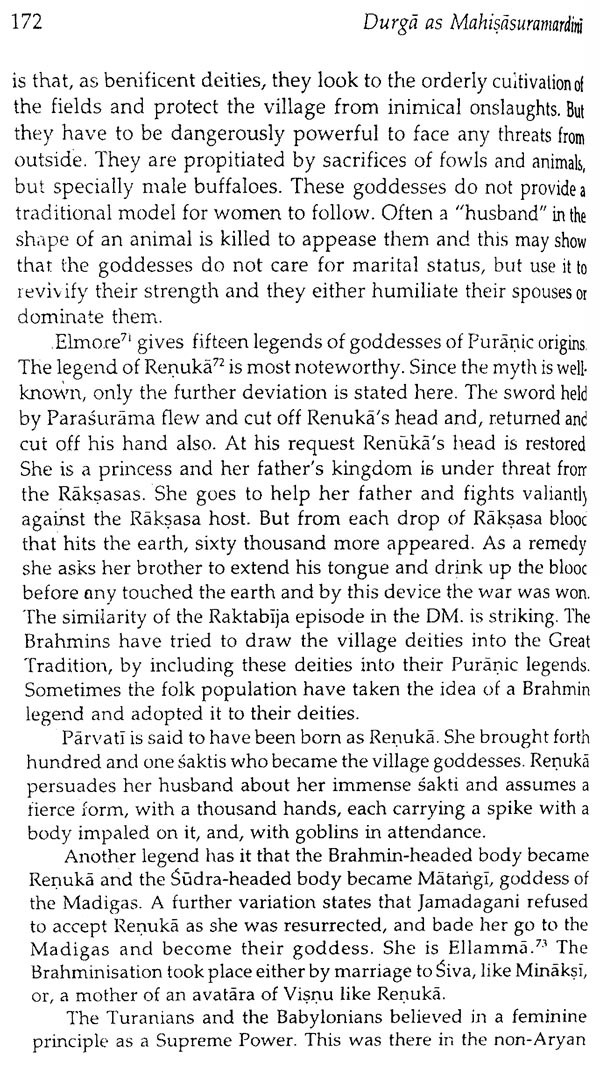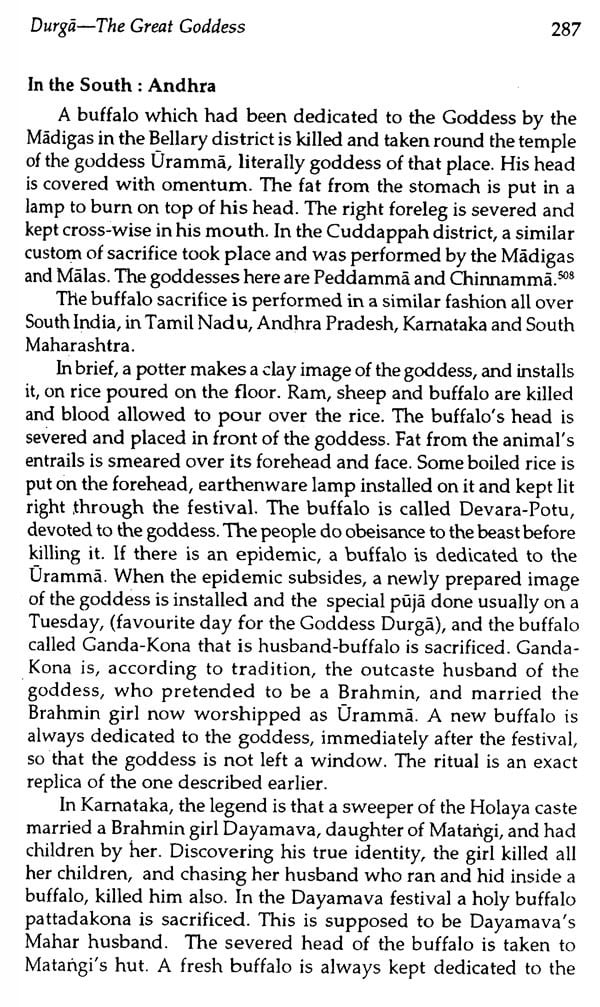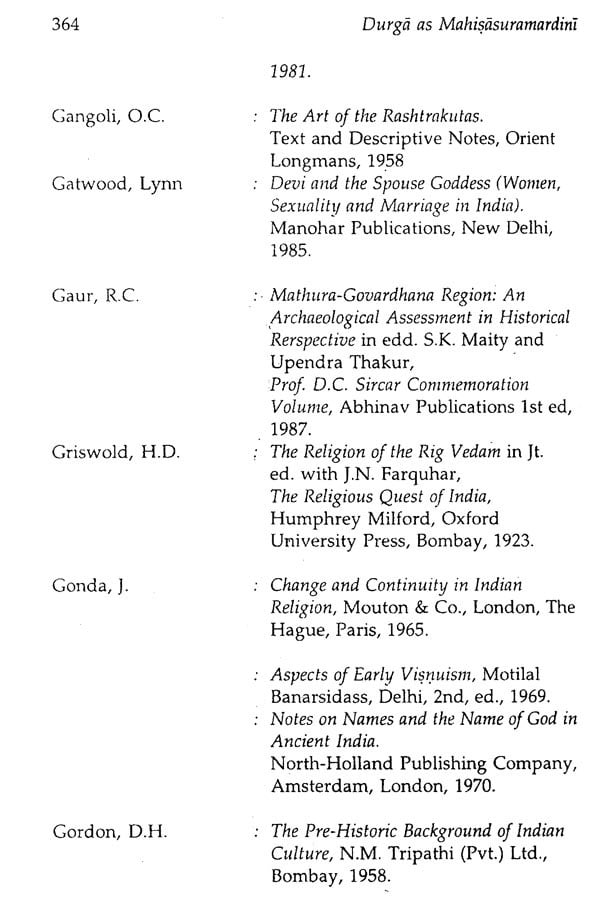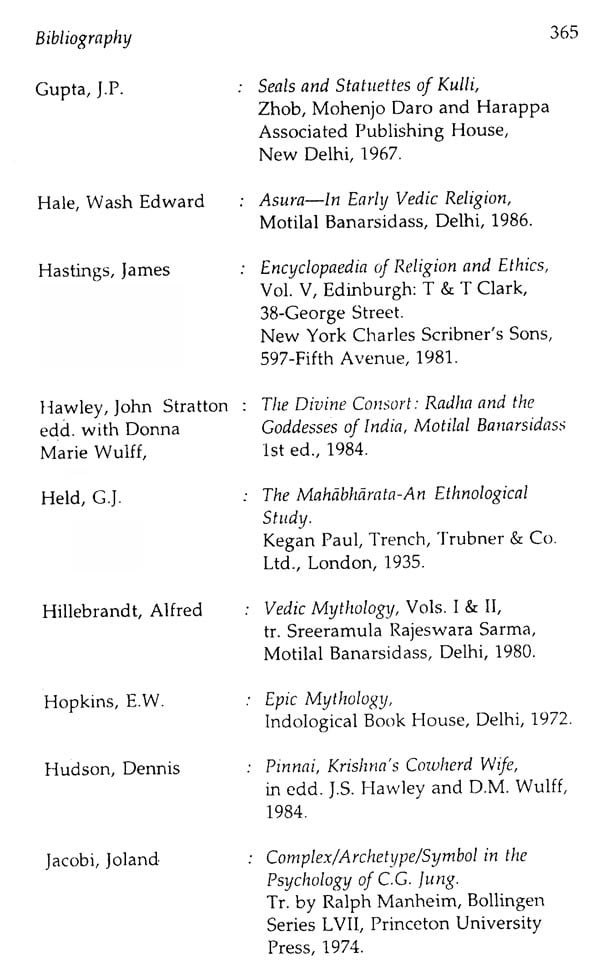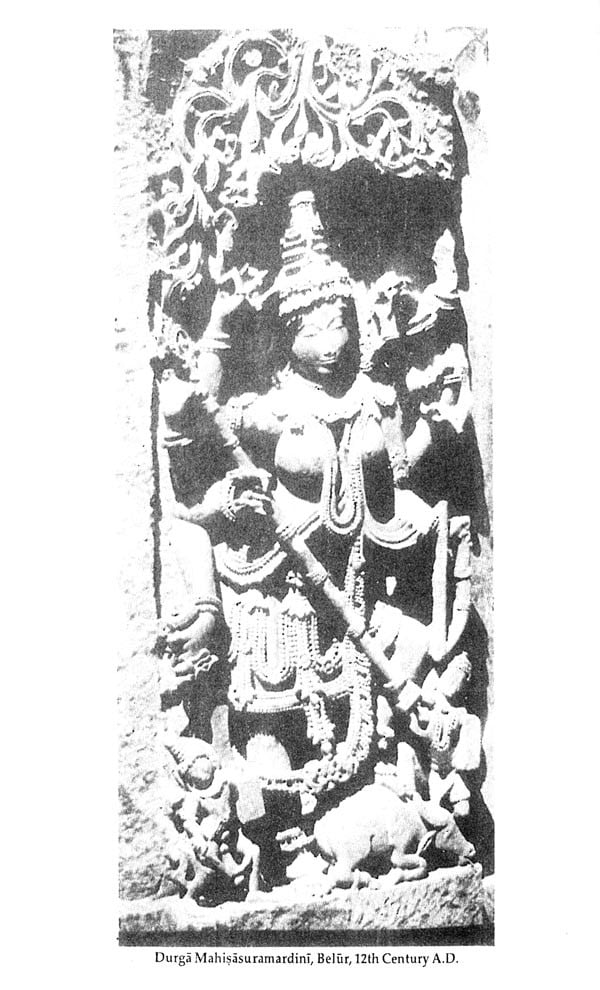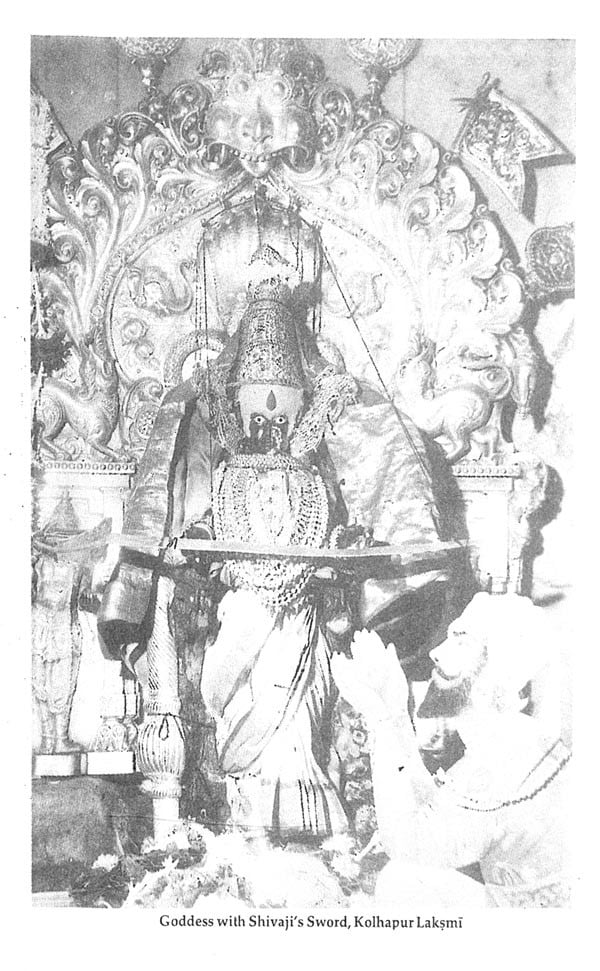About the Book Goddess Durga holds a pre-eminent position in Hindu religion. In the literature of the early fifth century A.D., she is elected as the great Goddess by all the gods in her myths of battles with the Asuras. She is established and exalted in her role as Mahisasuramardini.
A lot of work has been done on the goddess Durga. and her popular myths. but little attention has been paid to the Mahisasuramardini myth. The Devi Mahatmya itself has been interpreted by a few scholars, but not from the view points of symbolism and myth of this motif. This attempt hopes to fill such a lacuna.
The author has divided her study into five chapters to illustrate each and every aspect of the present work, i.e... Study of Myth and its Meaning: The cult of the Mother Goddess: The Vedic Period: The Matrs and Kali and Durga, the Great Goddess. To assess the Mahiṣasuramardini myth. symbols from Jung's and cassirer's viewpoint are also discussed by the author. Western and Indian mythical traditions are examined. Wherever possible original Sanskrit references are provided.
Some interesting points encountered in this study are analysed, leading to fresh insights. Would the stature of the Goddess reflect the position of women of that society? How to explain the anomalous position of women as compared to the supremacy voluntarily acceded to the Goddess by the Aryan gods? How is it that man has tried to deify motherhood but tries to control the single fen Why should the human mind awl propitiate the polarities contained the female principle as a deity? W were the Asuras and their leader Mahisa, and what is their background?
Royalty and laity have all lovin portrayed the Goddess in her role Mahisasuramardini over the entire length and breadth of the country, cutting across all barriers of langu and geography.
This is the first work published by Dr. Indira S. Aiyar (gold medalist). The rich information presented here on all aspects of the goddess myth shows the in-depth study of the subject. The author is continuing research on her favourite subject Indology. She contributes articles ar book-reviews to journals and periodicals.
At present she is associated with t editorial work of a bi-monthly Tattvaloka (Mumbai).
Foreword There is no doubt whatsoever that the cult of the Great Goddess, popularly called Mother Goddess, is the oldest form of religious worship in vogue in all primitive societies. Her images, mostly in clay, sometimes baked into terracotta, have been reported from sites of most of the ancient world civilizations right from the earliest palaeolithic times And India is, perhaps, the only country where the cult not only prevailed from the earliest known times but is also current to this day when most other ancient civilizations appear to have given it up. Her figures, mostly crude and unartistic, have been spotted from most of the pre-Harappan and Harappan sites. That it was a folk-cult not much appreciated by the sophisticated social classes is evident from the reticence of the Vedic samhitas, most probably coeval in point of time with the pre-Harappan and Harappan culture, about her. When compared to the rather derogatory remarks in a few Rg Vedic hymns about some other sectaries, their silence about the Mother Goddess worshippers may be taken to suggest an indifference, perhaps deliberate, in view of their wide diffusion. However, in somewhat later times, the cult was found to be irresistible in view of its great popularity among the masses whose feelings could just not be ignored for long. The epic and Puranic literature meant to cater to the needs and aspirations of all the social classes did not only take cognizance of her but recorded popular myths and legends and brought her into relationship with some of the most prominent divinities like Vishnu and Siva, especially the latter. She came to be called Durga and regarded as the spouse of Siva. She had various forms for different purposes, one of the most prominent of them being the 'Buffalo-trampler' (Mahisa-mardini) who is greatly eulogised and adored in the Devi-Mähätmya, a part of the Märkandeya-Purana studied independently. Her worship was, and still is, very popular in various parts of India, especially the eastern one. She is represented in art variously and it is possible to trace the development of her iconography by carefully seeing her images chronologically.
Preface The cult of the mother goddess has an unbroken history in the Hindu religious ethos. The cult's origin in the world's religious history is in the hoary past, and its diffusion ranges over a very wide area as seen from archaeological remains. The pastoral Aryans settled towards an agricultural mode of living, changing their religious requirements, as they pressed eastwards into India. The Goddess cult must have provided the required ritual needed for agricultural fertility and fecundity. The Goddess Durga as Sākambhari fulfilled such a need. She is elected and established as the Great Goddess, in the myths relating to her fights with the Asuras. She is exalted in her role as Mahişāsuramardini. The mythic aspect of this episode has not received sufficient attention. The myth's relevance is also important, studied against the socio-historical background. Psychology supplies the reasons behind an ambivalent Goddess. Set against this background, the mythology of Mahiṣasuramardini has been adjudged, treating the myth from the viewpoints of the theories on Myth and Symbolism as set forth by Western scholars. The present volume was originally presented to the Bombay University for the doctoral dissertation.
I would like to express my gratitude to all those scholars, friends and well wishers who have lended me a helping hand in the completion of this study. My special thanks are due to Prof. Y.S. Walimbe, who as my guiding teacher had introduced me to the subject of Myth and Symbolism, affording a fresh approach to the subject, sharpening my perception of the myth.
I express my deep gratitude to Prof. Ajay Mitra Shastri for encouraging me in the first place to publish the dissertation and now readily agreeing to write the Foreword.
I wish to thank Prof. K.K.A. Venkatachari, the Founder Director of Ananthacharya Indological Research Institute, Mumbai, for his encouragement. It is with pleasure and gratitude that I acknowledge my family's supportive attitude and encouragement, but for which this study would not have been possible.
**Contents and Sample Pages**

